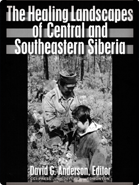Public health and folk medicine among North Baikal Evenkis
This article discusses the creation of public health institutions in the North Baikal region, and the boundary between them and folk healing practices. The field material for the article was collected in the Evenki village of Kholodnaia in the Severobaikalskii district (raion) of the Republic of Buriatiia. The archival and field research took place over fifteen months from 2007 to 2009. During my fieldwork, I observed that the local population relied on both public health institutions and folk medicine. Moreover, local nurse-practitioners (fel'dshery), who are employed in public health institutions, used both scientific and local knowledge in their healing practices. heither patients nor nurse-practitioners perceived these two domains of medical knowledge as contradictory. They used both in healing practices and daily life. This article will explan the use of public and folk medicine in healing, examine the use of local medical knowledge in the post-Soviet period and describe how rare medicinal herbs have become objects of accumulation within the market economy.

